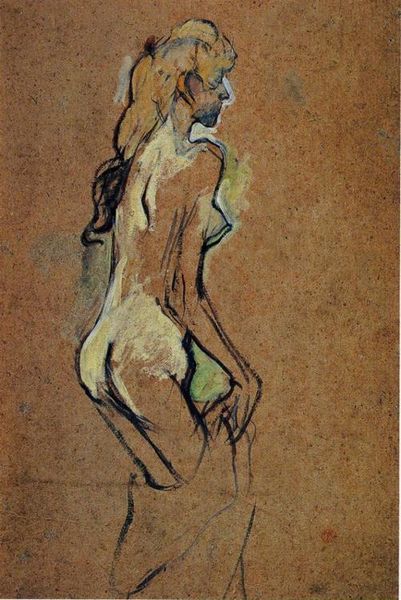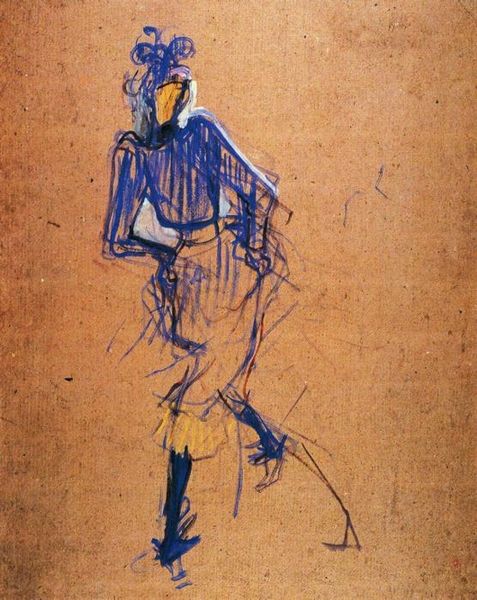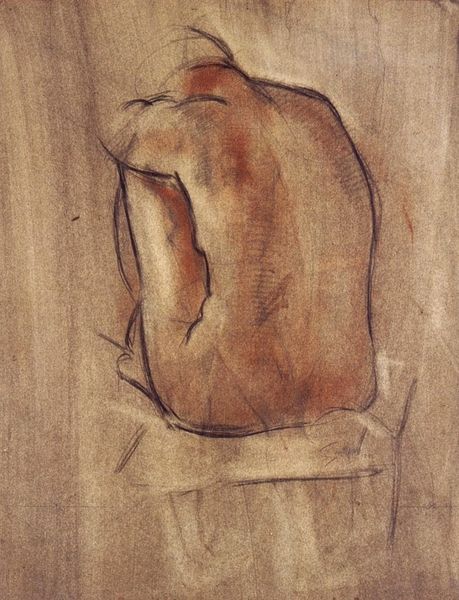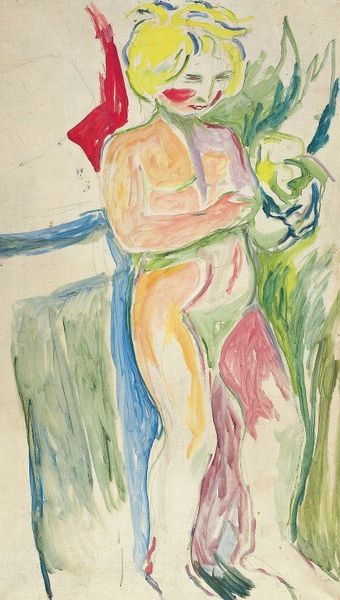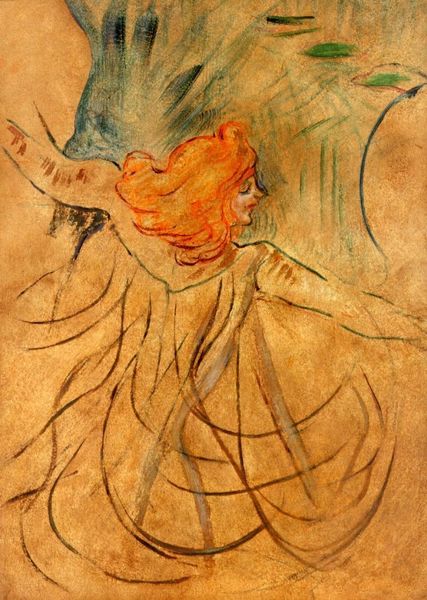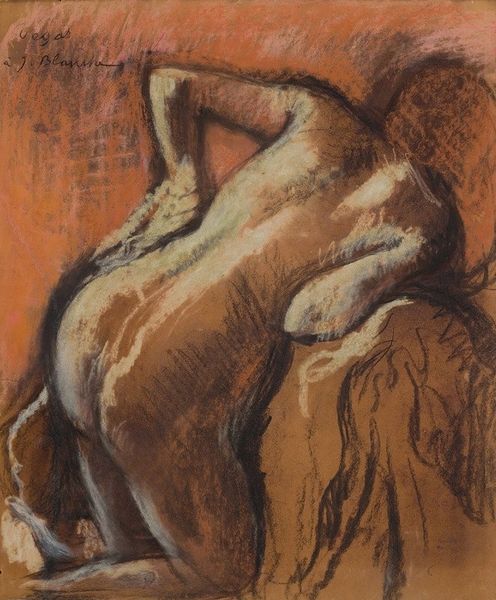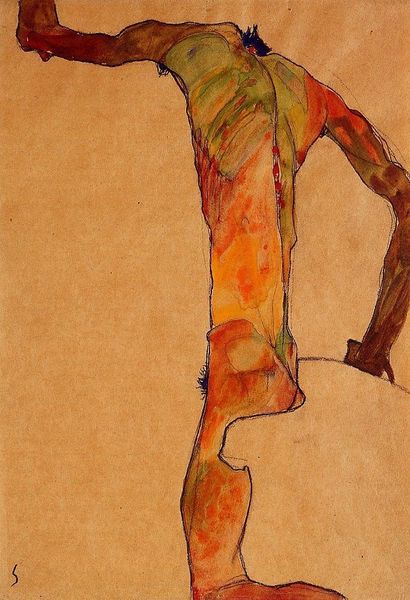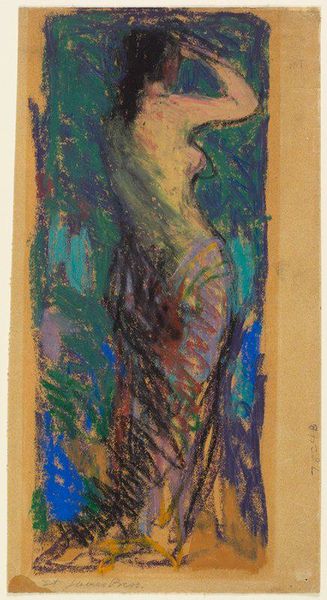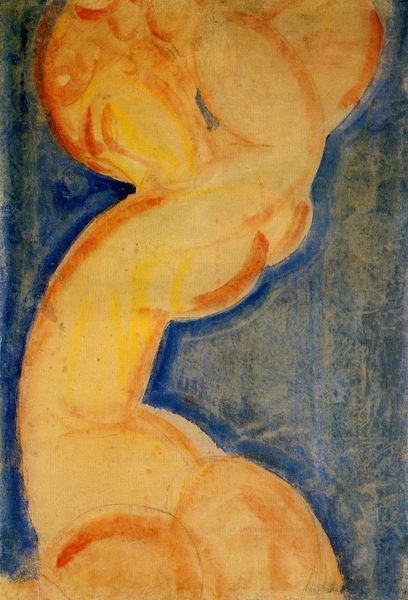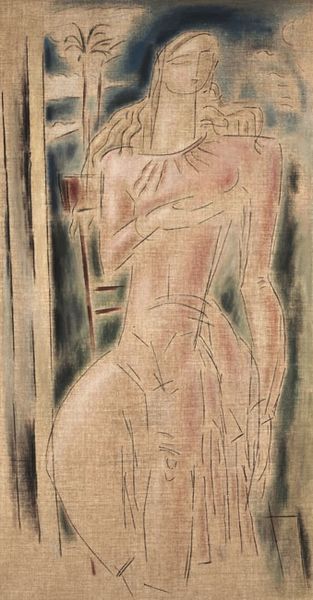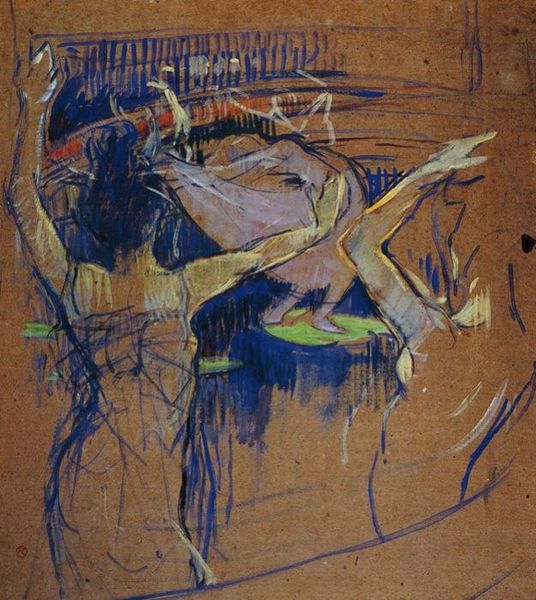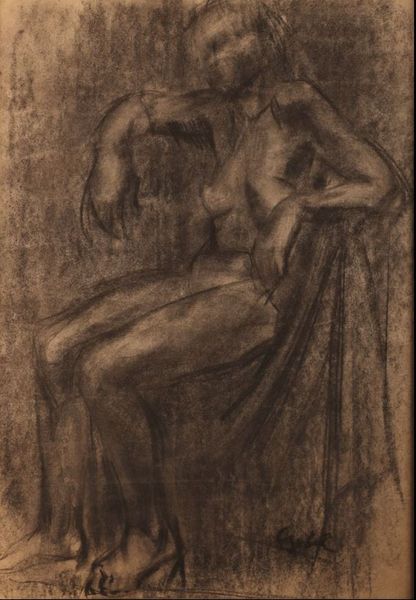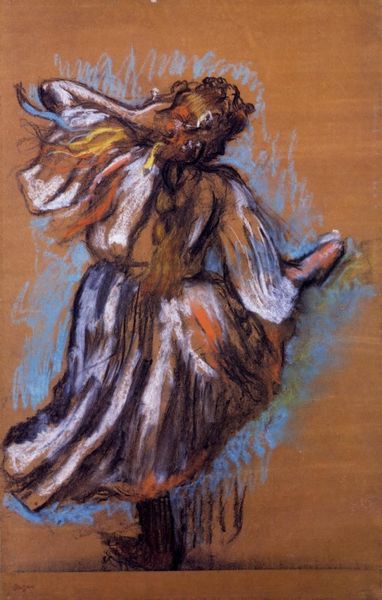
drawing, pastel, frottage
#
portrait
#
drawing
#
figuration
#
coloured pencil
#
pastel chalk drawing
#
pastel
#
post-impressionism
#
nude
#
frottage
Dimensions: 63.2 x 45.3 cm
Copyright: Public domain
Editor: So, here we have "Loie Fuller in" by Henri de Toulouse-Lautrec, created around 1893 using pastel and colored pencil. There's something almost ghostly about this figure; the lines seem to melt into each other, blurring the boundaries. What do you see in this piece beyond just a portrait? Curator: I see an exploration of femininity, identity, and performance through the lens of disability and societal expectations. Loie Fuller, a pioneering dancer, intentionally used voluminous fabrics and electric lights to create mesmerizing effects, obscuring her own form in ways that challenged conventional beauty standards. Do you see that here? Editor: Absolutely. The way the figure seems to almost dissolve… It makes you wonder if Toulouse-Lautrec is commenting on the way women were expected to transform themselves, to almost disappear into spectacle. Curator: Precisely. Toulouse-Lautrec, himself familiar with physical difference, was keenly aware of societal perceptions. The "nude" becomes less about objectification and more about the construction of identity and the ways in which Fuller actively subverted normative expectations. She wasn’t just a dancer; she was a visual artist, collaborating with technology and her own body to create something entirely new. How might the use of frottage speak to these transformations? Editor: It almost looks as if she's emerging from or sinking into the background. I hadn't thought about it that way. This changes the entire way I think of this work. Curator: Right! By understanding the historical and social context, we can appreciate the nuances of gender, identity, and the politics of representation in the fin-de-siècle era. Editor: It's incredible to consider how art can both reflect and challenge societal norms surrounding identity. Thanks for that insight.
